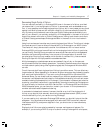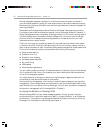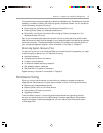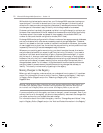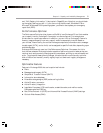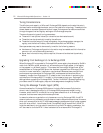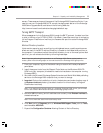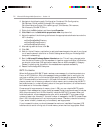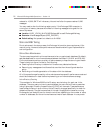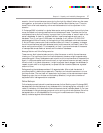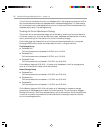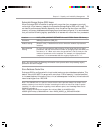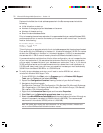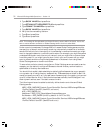
Chapter 2: Capacity and Availability Management 25
your server becomes low on kernel memory, your system becomes unresponsive. To regain
control of your server, you must restart it to free up the kernel memory.
Table 2.1 shows the registry parameters you might need to alter if you are to make perfor-
mance gains on servers with more than 1 GB RAM.
Table 2.1 Registry Parameters to Alter for Large Servers
Location Parameter Default When to Recommended
Setting Change Setting
HKEY_LOCAL MsgHandle Not present, To gain Enough to
_MACHINE\System Threshold but defaults additional accomodate
\CurrentControlSet (REG_DWORD) to 0x3e8 performance the total
\Services\SMTPSVC when message number of
\Queuing queues are messages in
consistently the queues at
greater than any one time.
1,000 You should not
raise the value
to greater than
15,000
decimal
HKEY_LOCAL MsgHandle Not present, To gain Set to the
_MACHINE\System AsyncThreshold but defaults additional same
\CurrentControlSet (REG_DWORD) to 0x3e8 performance value as
\Services\SMTPSVC when message “MsgHandle
\Queuing queues are Threshold”
consistently
greater than
1,000
HKEY_LOCAL FileCache Not present, If the 0x258 (600)
_MACHINE\System MaxHandles but defaults “MsgHandle
\CurrentControlSet (REG_DWORD) to 0x320 Threshold”
\Services\Inetinfo registry
]Parameters parameter
value is
increased
from defaults
MaxMessageObjects is a registry parameter that correlates to the number of messages
that can be queued up at a given time by SMTP. Each e-mail message resident in the SMTP
queue uses at least 4 KB of memory; therefore, it is possible to run into a low memory
situation with a very large queue. Setting MaxMessageObjects lower reduces the maxi-
mum number of messages that can reside in the queue, thus decreasing the maximum
memory footprint for SMTP. After this limit is reached, each SMTP connection made to
the server will return with an out-of-memory error. For example, if MaxMessageObjects is



